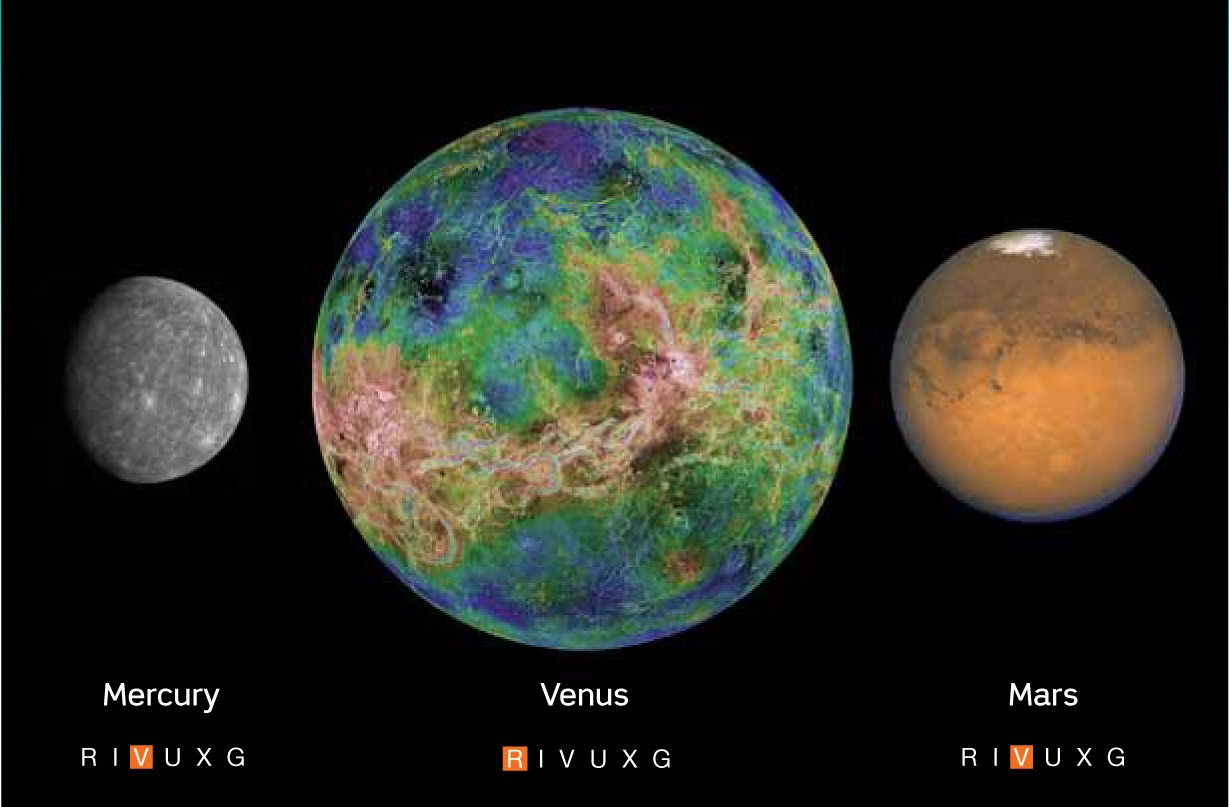CHAPTER
11

Mercury, Venus, and Mars: Earthlike yet Unique
LEARNING GOALS
By reading the sections of this chapter, you will learn
| 11–1 | What astronomers have learned by observing the terrestrial planets from Earth |
| 11–2 | The radically different ways in which Mercury, Venus, and Mars rotate on their axes |
| 11–3 | The outstanding features of Mercury, and why its magnetic field came as a surprise |
| 11–4 | How the advent of the space age transformed our understanding of Venus and Mars |
| 11–5 | How geologic activity took a very different form on Venus than on Earth, and why it essentially stopped on Mars |
| 11–6 | The key differences among the atmospheres of Earth, Venus, and Mars |
| 11–7 | How the atmospheres of Earth, Venus, and Mars evolved to their present states |
| 11–8 | The evidence that there was once liquid water on Mars |
| 11–9 | What we know about the two small satellites of Mars |
These images of Mercury, Venus, and Mars show the three planets that share the inner solar system with our Earth. All three have solid surfaces, and, in principle, a properly protected astronaut could stand on any of them. The differences between these three worlds, however, are pronounced.
Mercury is small, airless, and extensively cratered. It is also mysterious: Mercury has a perplexing and unexpected magnetic field. It also rotates in a manner unique in the solar system, spinning 3 times on its axis for every two orbits around the Sun.
Venus is nearly the same size as Earth, but it is shrouded by a perpetual cloud cover that hides its surface from view. Unmanned spacecraft have used radar to map Venus at close range and even land on its surface. The false-color topographic map shown in the image reveals that Venus has no true continents but merely highlands (shown in red) that rise gently above the planet’s lower-lying areas (shown in blue). We have also learned that Venus’s atmosphere is thick and searing hot, and that its clouds contain droplets of corrosive sulfuric acid.
Mars has captivated the popular imagination like no other planet. But rather than being the abode of warlike aliens, Mars proves to be an enigmatic world. Some parts of its surface are drier than any desert on Earth, while other locations show evidence of having been underwater for extended periods. Our challenge is to understand how these three terrestrial planets evolved to be so unique and so different than Earth.